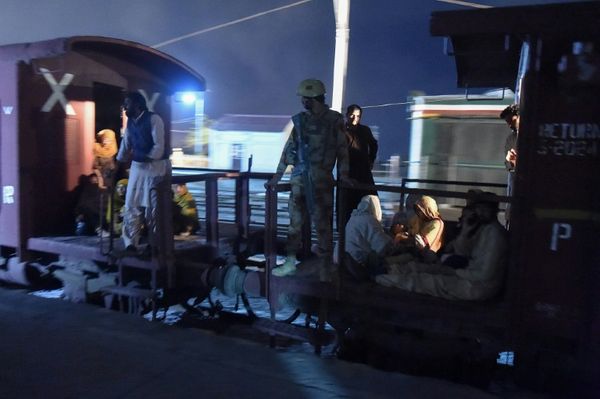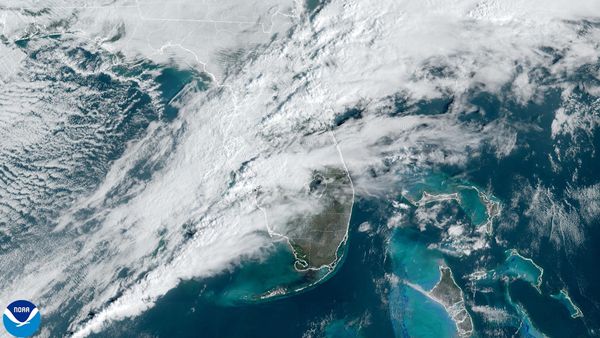
If you’ve been following the eruption of Nyiragongo volcano in the Democratic Republic of the Congo in the past week, you’ve probably heard the term ‘limnic eruption’ mentioned a few times. I’ve been asked, by both members of the public and colleagues in the press, what exactly a limnic eruption is, and I’ve seen a fair amount of confusion about what can cause one being broadcast online.
So: what is a limnic eruption, and what has the phenomenon got to do with Nyiragongo? Here’s everything you need to know.
What is a limnic eruption?
Despite the name, a limnic eruption doesn’t necessarily have anything to do with a volcanic eruption. The word ‘limnic’ relates to lakes, and ‘eruption’ refers not to the expulsion of magma, but dissolved gas.
Thanks to some large-scale and truly fascinating geologic phenomena, the magma supplying the Nyiragongo volcano is packed with dissolved carbon dioxide. Carbon dioxide is a volcanic gas eructed by many volcanoes around the world, but Nyiragongo is something else entirely: it is one of the most prolific natural emitters of carbon dioxide on the planet—although it pales in comparison to the enormous volumes of carbon dioxide produced by the continuous ignition of the world’s fossils fuels.
As magma rises from depth, the pressure exerted by the rocks around it drops; eventually, the gas dissolved in the molten matter bubbles out of solution and it seeps up to the surface. If it meets a sizeable enough aquifer, that gas can re-dissolve and become trapped, stuck under the weight of all the water above it.
Small amounts of this gas can sometimes sneakily bubble out and reach the soil up top. Being invisible, odourless and denser than the air around it, it sinks into low-lying areas and ponds there. A not-insignificant number of people die every single year when they unwittingly wander into these pockets of liberated carbon dioxide and subsequently asphyxiate.
If the lake suffers a major disturbance – say, through a landslide – and its lower, denser, gas-packed layers get knocked about, they may head to shallower depths. If so, a lot of that dissolved gas can escape all of a sudden and all at once—and that is what’s referred to as a limnic eruption.
Have any limnic eruptions happened before?
There’s no doubt that many have happened before, long before modern times, but they aren’t always easy to identify from the geological record. A handful have also happened in recent times to deadly effect, with the limnic eruption at Cameroon’s Lake Nyos, in 1986, being the most infamous example.
Nyos is a crater lake, a chasm blasted out of the land by volcanic activity around 400 years ago. And like several of the region’s lakes, this one was packed with dissolved carbon dioxide. Only its high water pressure was keeping it trapped beneath the tranquil surface—until August 21, 1986, when something disturbed the lake. Scientists can’t yet agree on the trigger: an eruption, a landslide and the accumulation of cold rainwater on the surface are all suspects, each capable of forcing the less dense upper layer of the lake to sink while the denser, deeper layer of the lake rose.
Whatever the cause, the result was unquestionably catastrophic. The lake experienced severe turbulence, sufficient enough to allow its deep pockets of dissolved carbon dioxide to bubble out of solution en masse. In just 20 seconds, 0.3 cubic miles of the phantom gas gushed out of the lake before tumbling downslope, managing to reach villages as far as 16 miles away. Within a few hours, 1,746 people had been killed, along with thousands of livestock animals—slaughtered without a sound. When people first arrived on the scene, they came across a cornucopia of corpses without any obvious signs of physical trauma on their bodies.
What’s the deal with Lake Kivu?
This giant lake, whose northern shores are contiguous with the city of Goma, contains at least 70 cubic miles of carbon dioxide. If even a fraction of this gas is unleashed on Kivu’s urbanised shorelines, it would kill thousands.
The lake also contains 15 cubic miles of methane, another nefarious gas that’s produced by the exhalations of microbes that eat a small amount of that plentiful carbon dioxide. That methane isn’t just toxic; it’s also highly combustible. Pockets of it gathering on land could ignite and explode—another unwelcome, chaotic variable among many.
Scientists are acutely aware of this hazard. For now, the gases are trapped beneath an aquatic lid: the weight of 1,500 feet of water above, and an additional dense layer of salty water, keeps them from rushing to the surface. But that may not always be the case—a grim thought for the city’s two million or so inhabitants.
One alleviating factor is that Rwanda, the DRC’s easterly neighbour, has a floating gas extraction facility on Lake Kivu. Using a long pipe, this platform sucks up some of the deeper lacustrine waters; as they rise and the pressure drops, the methane bubbles out of the water. It can then be captured and subsequently burned to produce energy.
Removing some of Lake Kivu’s methane not only removes some of its potentially deadly gases, but it also drops the pressure pushing on the salty seal above those deep, gas-rich layers. This facility won’t, however, have a significant mitigating effect on the lake’s hazards. The rig is small, a pilot of a larger, yet-to-be realised natural gas power production scheme.

The lake’s carbon dioxide is another matter entirely—it’s essentially unaffected by this gas extraction scheme.
Cameroon’s Lake Nyos has a deep-seated pipe in it that stretches all the way to the surface, allowing it to slowly release its trapped carbon dioxide in the form of an effervescent water fountain. The hope was that this would preclude a serious accumulation of the lethal gas over the years. But it’s proving to be insufficient: carbon dioxide is still building up in the lake faster than the valve can effuse its fizz.
Lake Kivu, 1,000 times more expansive than Lake Nyos, also has magnitudes more dissolved carbon dioxide in it. Even if engineers placed several of these types of valves into this vast body of water, it almost certainly won’t make enough of a difference to prevent a limnic eruption.
Could the current geologic activity unleash the lake’s dissolved gas?
In the past week, a sheet of Nyiragongo’s magma infiltrated the shallow subsurface around the shores of Lake Kivu. At the same time, the area has bene rocked by several significant earthquakes, whose shaking has caused some buildings in Goma to collapse.
Would a volcanic eruption within Lake Kivu, or any particularly vigorous seismic activity, cause a limnic eruption? No-one knows for sure, which is why scientists remain decidedly on edge.
Remember: in order to get a limnic eruption, you need something to overturn the lake’s stratified layers, exposing the gas-rich deeper layers to the low-pressure environment above. So what would it take to make that happen in Lake Kivu? It’s not clear, because this event hasn’t happened in modern history. For now, the best scientists can do is to use mathematical and physical models to simulate, and therefore predict, what conditions need to be met to trigger a limnic eruption at this location.
One 2016 study notes that it’s possible a landslide or some sort of volcanic activity could pose a risk. It doesn’t directly examine these possibilities, though; instead, it simulates the disturbances to the water caused by the lake’s gas extraction facility, and comes to the conclusion that the turbulence it makes isn’t anything to be concerned about.
But what of volcanism? A small volume of lava cascading into the lake from above probably wouldn’t trigger one; this actually happened during Nyiragongo’s 2002 eruption, but no limnic eruption occurred. But a major, continuous, prolonged eruption of magma on the lakebed itself may be a problem. If such an event pumps a prolific volume of molten rock directly into those deeper layers of the lake, it could heat them up and make them buoyant. But perhaps even that won’t be enough to cause the lake’s layers to overturn.
An earthquake that caused the lakebed to shake a lot, or one that initiates a landslide into the lake, is also seen as a trigger risk—but again, it’s not known exactly what magnitude of quake or debris avalanche is required to get the lethal ball rolling. As with bouts of localised volcanism, there’s little that can be said about the effect of earthquakes with any real confidence.
For the foreseeable future, uncertainty will reign. Scientists will continue to monitor the lake’s shores, watching for any signs of disturbance.
The seismic activity may fade away. The injected magma may cool, harden and become harmless. Ultimately, a limnic eruption may not occur. But the mere possibility that any of the ongoing activity in the region may engender a lethal expulsion of gas from Lake Kivu is one of several reasons why an evacuation of several neighbourhoods in Goma took place—and thank goodness it did.







